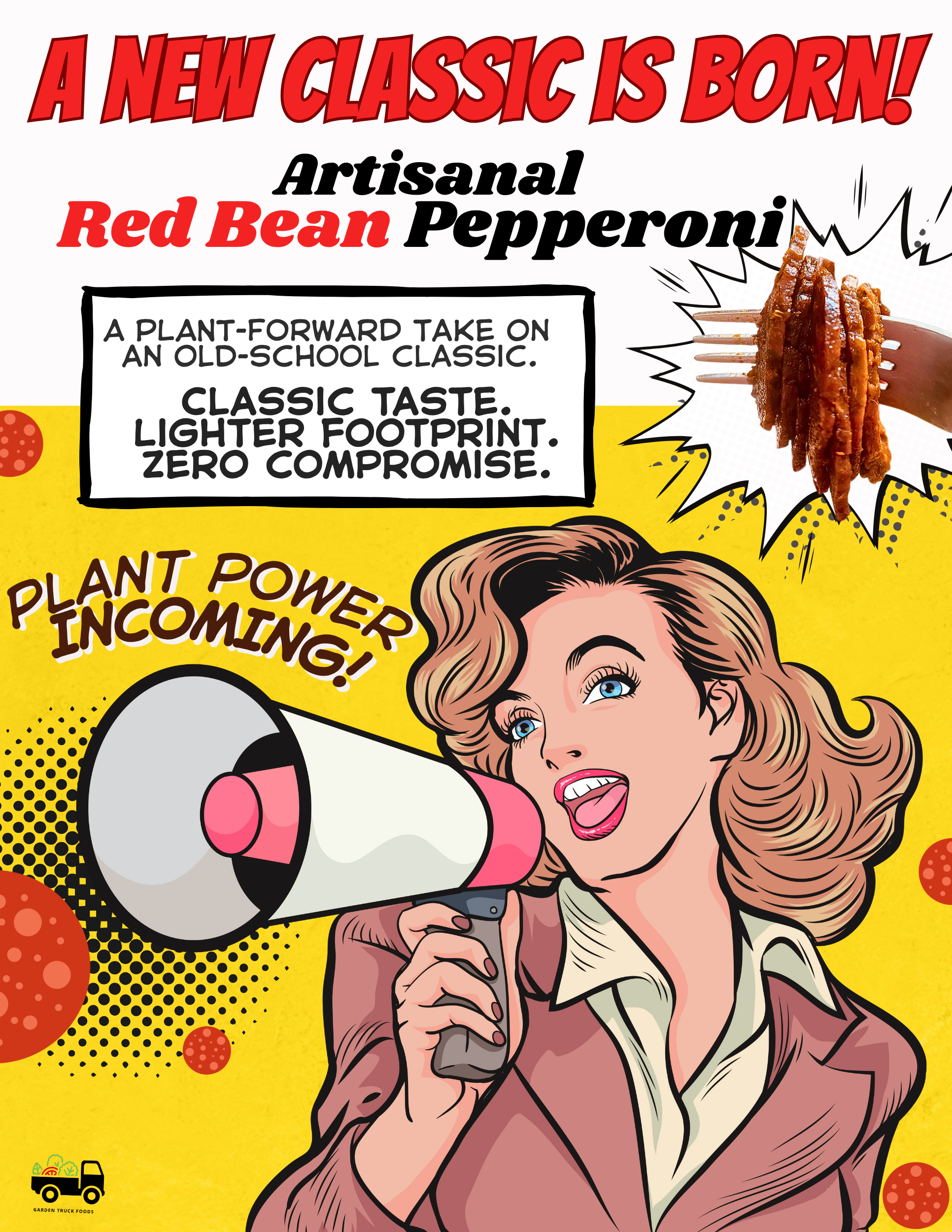The Making of our Artisanal Red Bean Pepperoni
Part 1: Persistence, Trial, Breakthrough
Developing our artisanal red bean pepperoni wasn’t an overnight success. It was years of slow, steady work. Testing, adjusting, and circling back. Again and again. Annnd again.
We began our pepperoni journey in 2012, long before plant-based meats like Impossible and Beyond were lining store shelves. Back then, plant-based food was still a niche category. At the time, we were developing bean-based proteins out of our Jacksonville eatery and catering business. Our Italian fennel sausage became a customer favorite thanks to its clean ingredients, bold flavor, and health-forward profile. That momentum encouraged us to keep going. What else could we create with beans? What hadn’t been done right yet?
Pepperoni stood out.
It’s the most popular pizza topping in the world. And yet, no one had cracked the plant-based version. The few products that were out there were either too artificial or too forgettable. We wanted to build something different. Something deeply satisfying, made from real ingredients, and rooted in traditional food methods. So we started experimenting.
Our first iteration used a black bean base. It was a step in the right direction, but the results weren’t where we wanted them. The texture wasn’t quite right, and the dark color made the slices look unfamiliar to most consumers. So over time, we made the switch to pinto beans — not just to lower our carbon footprint (check out these wild stats), but because they’re a more sustainable choice overall, from growing conditions to resource use. And pinto beans brought a more neutral flavor and color profile that aligned more closely with conventional pepperoni.
That switch changed everything.
Throughout the R&D process, we were juggling full-time operations running a busy cafe kitchen, booking and prepping for catering events, managing staff, and serving customers! Recipe testing happened in the off-hours. On quiet days. Late at night. We’d sneak in small test batches between event prep and get instant feedback from the people eating them.
Sometimes that feedback wasn’t the best, but it helped. We leaned on our regulars, our cafe customers, and especially our non-vegan friends and family to get it right. We wanted folks who wouldn’t sugarcoat their feedback. They helped us get better. We adjusted our spice blends, reformulated the texture, played with curing methods, and kept pushing the recipe forward, one batch at a time.
“Our goal has always been to create products that closely mirror the familiar flavor profile of traditional pepperoni.”
This wasn’t just product development. It was a full-on commitment to reimagining a classic — using everything we knew from our backgrounds in fine dining, catering, and community kitchens. The techniques we’d used for years in traditional cooking — curing, seasoning, layering flavors — became the backbone of how we built the product we’re so proud of.
After dozens (maybe hundreds) or test batches, we finally reached a version that hit the mark. The flavor was bold and balanced. The texture held its own. It crisped in a hot pan. It sat.is.fied.
It was no longer just “vegan pepperoni.” It was pepperoni. It just happened to be plant-based.
This first chapter isn’t about scaling or brand identity. It’s about that long stretch of time when no one was watching — the years we spent refining, questioning, and starting over. It’s about persistence.
About refusing to settle. And about believing that a bean could be more than just a bean — it could be the start of something big.
Next in our Behind-the-Scenes of Pepperoni series: A look at our earliest prototypes. The weird, wobbly, and the unexpectedly promising.


